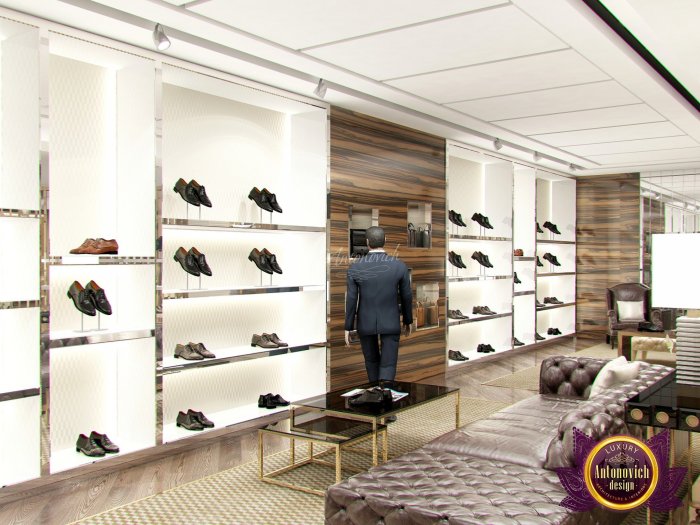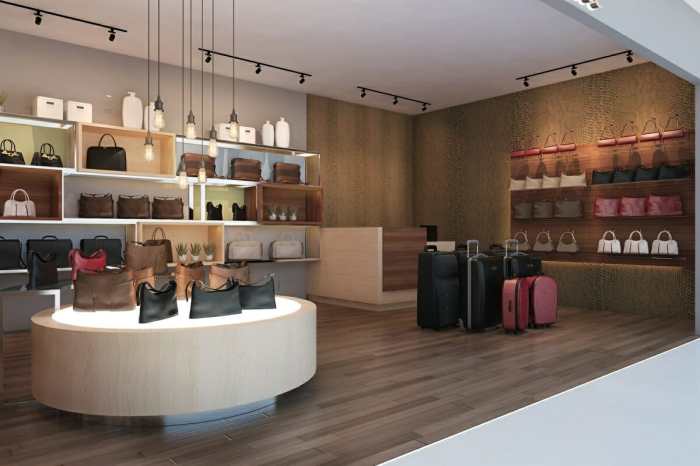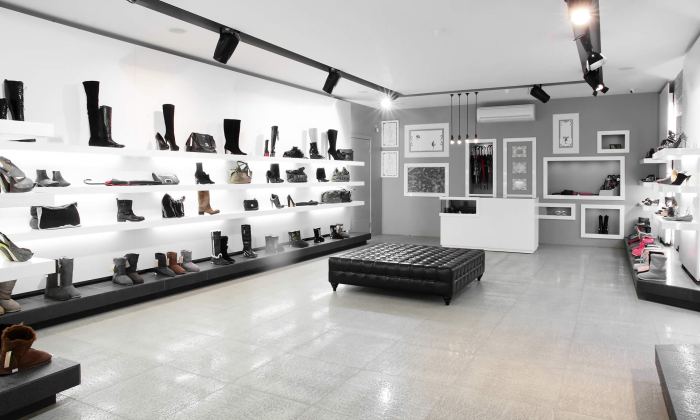Optimizing Business Success: Shop Interior Design Strategies
Embark on a journey through the world of shop interior design, where every element plays a crucial role in shaping customer experiences and driving sales. From creating functional spaces to incorporating brand identity, discover the key factors that make a shop's interior design truly impactful.
Importance of Shop Interior Design
Shop interior design plays a crucial role in the success of businesses by creating a welcoming and engaging environment for customers. It goes beyond aesthetics to influence customer experience and behavior, ultimately impacting sales and brand perception.
Enhancing Customer Experience
Effective shop interior design can enhance the overall customer experience by creating a pleasant and memorable setting. This includes factors such as layout, lighting, color scheme, and furniture arrangement, all of which contribute to a cohesive and inviting atmosphere.
Impact on Customer Behavior
Well-thought-out interior design can also influence customer behavior, guiding them through the store and encouraging them to explore products. For example, strategic placement of merchandise, interactive displays, and comfortable seating areas can all affect how customers interact with the space and make purchasing decisions.
Examples of Successful Shop Interior Designs
- The Apple Store: Known for its minimalist design, sleek layout, and use of natural materials, the Apple Store creates a modern and innovative atmosphere that aligns with the brand's image. This design approach has contributed to the store's success in attracting and retaining customers.
- Anthropologie: With its eclectic mix of vintage furniture, whimsical decor, and curated displays, Anthropologie creates a unique and immersive shopping experience. The store's design reflects its brand identity and has proven to be effective in driving sales and customer loyalty.
- Nike: Nike's flagship stores feature dynamic layouts, interactive installations, and digital technology to engage customers and showcase the brand's products. The design elements focus on creating an energetic and inspirational environment that resonates with athletes and fitness enthusiasts.
Elements of Effective Shop Interior Design

When it comes to designing a shop interior, there are several key elements to consider in order to create a space that is not only visually appealing but also functional for both customers and staff. From the layout to the color scheme, each aspect plays a crucial role in shaping the overall ambiance of the shop.
Key Elements to Consider
- Layout: The layout of the shop should be designed in a way that allows for easy navigation and flow of customers. Consider factors such as aisle width, display placement, and checkout locations.
- Color Scheme: Choose a color scheme that reflects the brand identity of the shop. Colors have the power to evoke emotions and set the tone for the shopping experience.
- Lighting: Lighting is essential in creating the right atmosphere within a shop. Proper lighting can highlight products, create focal points, and enhance the overall aesthetic.
- Furniture and Fixtures: The furniture and fixtures should complement the overall design theme of the shop while also being functional and durable.
Design Styles for Different Types of Shops
- Minimalist: A minimalist design style focuses on simplicity and clean lines, making it ideal for shops that want to convey a sense of modernity and sophistication.
- Rustic: A rustic design style incorporates natural elements such as wood and stone, creating a warm and inviting atmosphere perfect for artisanal shops or cafes.
- Modern: A modern design style features sleek finishes, bold accents, and a minimalist approach, suitable for contemporary boutiques or tech stores.
Role of Lighting, Color Schemes, and Layout
- Lighting: Proper lighting can influence the mood of customers and highlight certain products or areas within the shop. It is important to strike a balance between ambient, task, and accent lighting.
- Color Schemes: The choice of colors can impact the perception of space and influence customer behavior. Warm tones can create a cozy atmosphere, while cool tones can evoke a sense of calmness.
- Layout: The layout of a shop can affect customer flow, product visibility, and overall shopping experience. Consider factors such as sightlines, focal points, and circulation paths when designing the layout.
Designing Functional Spaces
Creating functional spaces in a shop is crucial for ensuring a seamless shopping experience for customers. By optimizing space for both aesthetics and functionality, you can enhance the overall design and increase customer satisfaction.
Optimizing Space
When designing a shop interior, it's essential to make the most of the available space. Consider using versatile furniture that can serve multiple purposes, such as display shelves with built-in storage or movable fixtures that can be adjusted to accommodate different product displays.
- Utilize vertical space by installing tall shelves or hanging racks to maximize storage without taking up valuable floor space.
- Consider incorporating modular furniture that can be easily rearranged to adapt to changing needs or seasonal displays.
- Use mirrors strategically to create the illusion of larger space and enhance the overall ambiance of the shop.
Traffic Flow
The layout of your shop should prioritize efficient traffic flow to guide customers through the space seamlessly. Consider the natural paths that customers are likely to take and ensure that the design allows for easy navigation and exploration.
- Create clear pathways between different sections of the shop to prevent congestion and make it easy for customers to move around.
- Place popular or high-margin items in prime locations to attract attention and encourage browsing.
- Ensure that key areas such as check-out counters and fitting rooms are easily accessible without disrupting the flow of movement.
Creative Storage Solutions
Incorporating creative storage solutions not only helps to declutter the space but also enhances the overall design aesthetic of the shop. Consider using innovative storage options that blend seamlessly with the decor and contribute to the overall ambiance.
- Opt for furniture with hidden storage compartments to keep clutter out of sight and maintain a clean, organized look.
- Install floating shelves or wall-mounted units to display products while also providing functional storage space.
- Utilize under-counter storage or built-in cabinets to make use of every inch of available space without compromising the design.
Incorporating Brand Identity

When it comes to shop interior design, integrating a brand's identity is crucial to create a cohesive and memorable experience for customers. By incorporating branding elements like logos, colors, and slogans into the design, you can effectively communicate the essence of the brand and differentiate it from competitors.
Strategies for Integrating Brand Identity
- Use the brand's color palette throughout the store to create a consistent visual identity.
- Incorporate the brand's logo in prominent locations such as the entrance or behind the checkout counter.
- Create custom signage and graphics that reflect the brand's personality and values.
- Utilize branded merchandise or packaging as part of the decor to reinforce brand recognition.
Examples of Successful Brand Integration
- Apple stores are a prime example of successful brand integration, with their minimalist design, use of white and glass elements, and prominent display of the iconic Apple logo.
- Nike stores often feature dynamic displays of their signature swoosh logo, along with motivational slogans and imagery that resonate with their target audience.
- Starbucks incorporates its distinctive green color scheme, logo, and cozy cafe atmosphere to create a welcoming and recognizable brand experience across all its locations.
Creating a Welcoming Atmosphere
Creating a welcoming ambiance through interior design is crucial in attracting customers and making them feel comfortable in a retail space. The design elements play a key role in setting the tone and mood of the environment, ultimately influencing the overall shopping experience.
Role of Decor, Furniture, and Aesthetics
Decor, furniture, and aesthetics are essential in creating a welcoming atmosphere in a shop. The decor sets the style and theme of the space, while furniture provides functionality and comfort. Aesthetics, such as color schemes, lighting, and textures, contribute to the overall look and feel of the interior.
By carefully selecting and arranging these elements, a warm and inviting atmosphere can be achieved.
- Choose decor that reflects the brand's identity and resonates with the target audience. This could include artwork, signage, or decorative items that evoke a sense of familiarity and connection.
- Opt for comfortable and stylish furniture that encourages customers to linger and explore the products on display. Seating areas, display tables, and fitting rooms should be strategically placed to enhance the shopping experience.
- Paying attention to aesthetics such as lighting and color palettes can greatly impact the ambiance of the space. Soft, warm lighting can create a cozy atmosphere, while carefully chosen colors can evoke specific emotions and moods.
Adding Personal Touches
Adding personal touches to the interior design can further enhance the welcoming atmosphere and create a memorable experience for customers. These touches can be tailored to the target audience and help build a connection between the brand and its customers.
- Consider incorporating elements that reflect the local culture or community to create a sense of belonging and authenticity.
- Personalize the space with unique details such as custom-made fixtures, locally sourced artwork, or interactive displays that engage customers on a personal level.
- Showcasing the brand's story and values through visual storytelling can also create a more meaningful and inviting environment for customers to explore.
Budget-Friendly Design Tips

When working with a limited budget for shop interior design, there are several cost-effective tips that can help you create a stylish and functional space without breaking the bank.
Repurpose Existing Elements
One way to save money on interior design is to repurpose existing elements in your shop. For example, you can give old furniture a fresh coat of paint or repurpose shelves and displays for a new look. This not only saves money but also adds a unique touch to your shop's interior.
DIY Projects
Another budget-friendly option is to incorporate DIY projects into your design plan. From creating custom wall art to building your own fixtures, DIY projects can add a personal and creative touch to your shop while keeping costs low.
Prioritize Key Design Aspects
When working with a limited budget, it's essential to prioritize spending on key design aspects that will have the most impact. Focus on elements like lighting, flooring, and signage that can make a big difference in the overall look and feel of your shop.
By allocating your budget strategically, you can achieve a stylish and inviting interior without overspending.
Conclusive Thoughts
In conclusion, shop interior design is not just about aesthetics but also about creating a welcoming atmosphere that resonates with customers. By focusing on key elements and budget-friendly tips, businesses can elevate their spaces to new heights of success through thoughtful design choices.
Clarifying Questions
How does shop interior design impact customer behavior?
Shop interior design can influence how customers perceive a brand, navigate the store, and make purchasing decisions.
What are some cost-effective design tips for shop interiors?
Repurposing existing elements, incorporating DIY projects, and prioritizing key design aspects can help create impactful designs on a budget.
Why is traffic flow important in shop interior design?
Optimizing traffic flow ensures a seamless shopping experience for customers and can lead to increased sales.
How can a brand's identity be integrated into shop interior design?
Branding elements like logos, colors, and slogans can be strategically used to reinforce a brand's identity within the shop's design.
What role does lighting play in creating a cohesive shop interior design?
Lighting sets the mood, highlights key areas, and enhances the overall ambiance of a shop, contributing to a cohesive design.